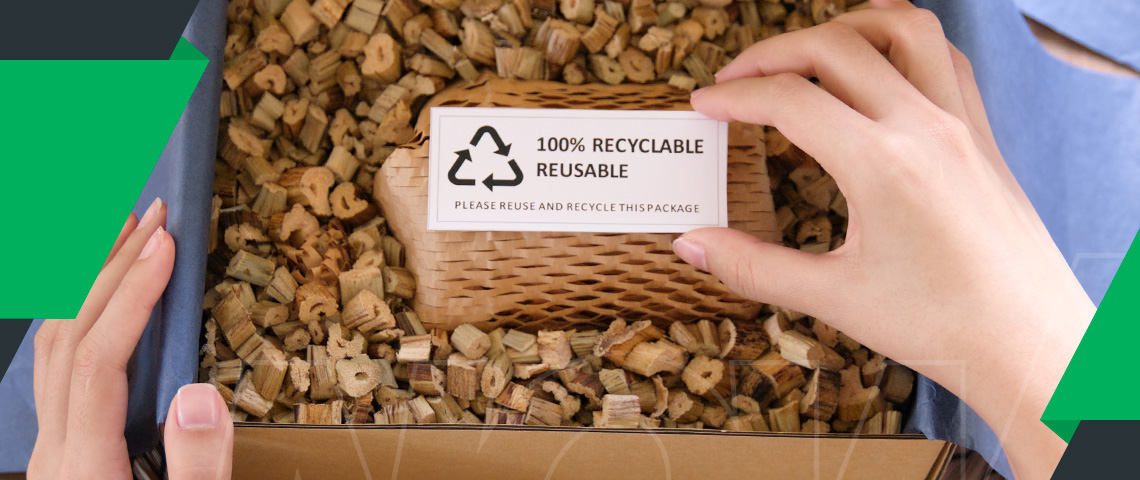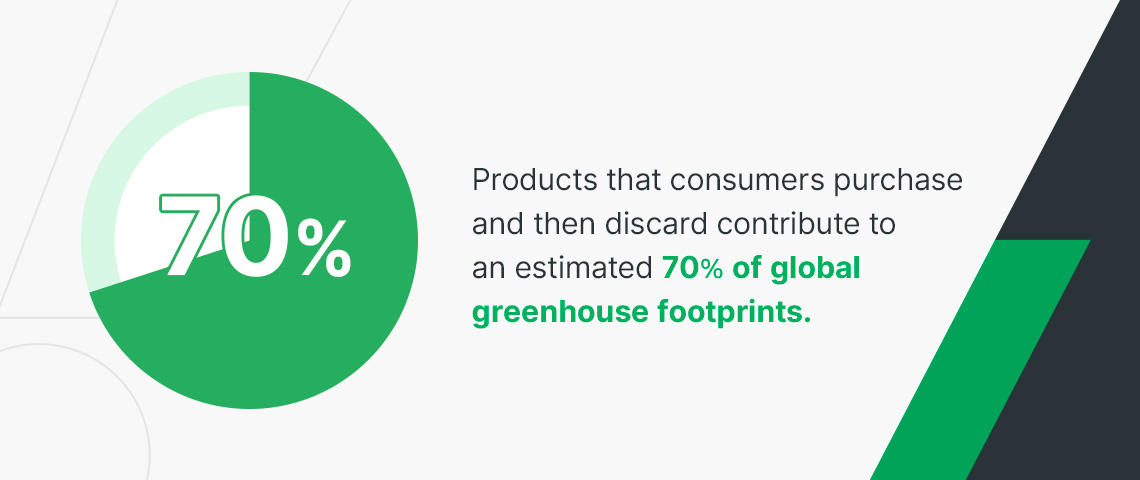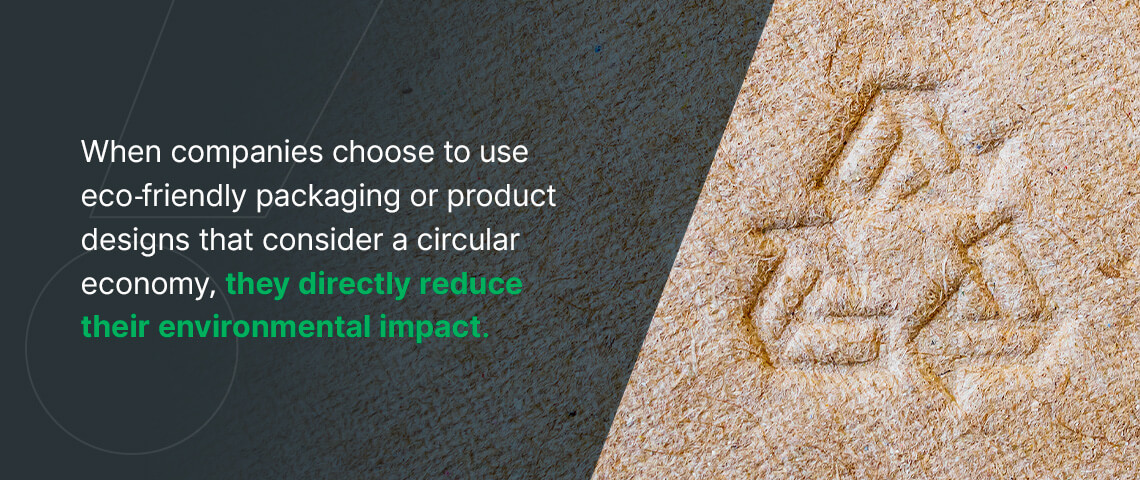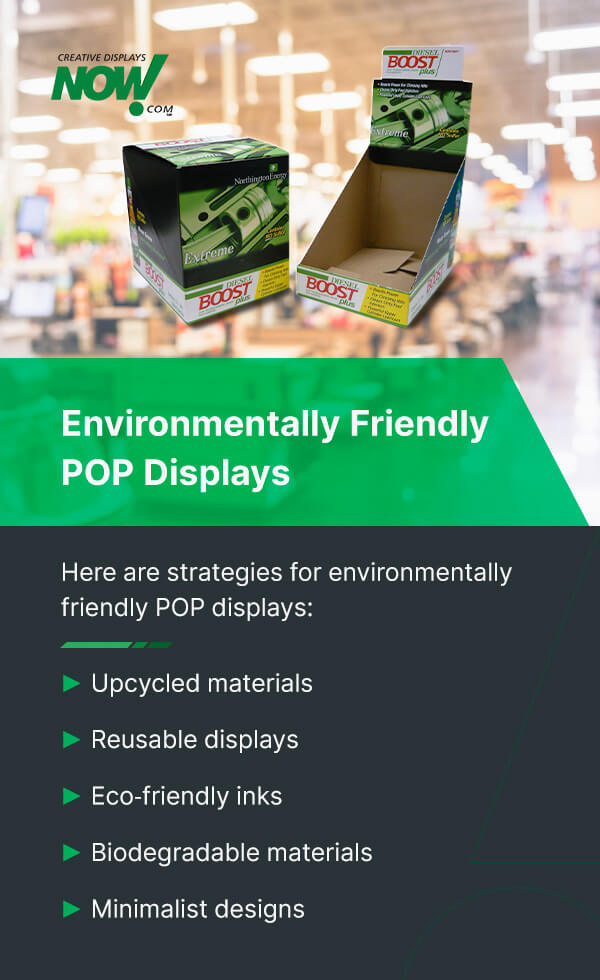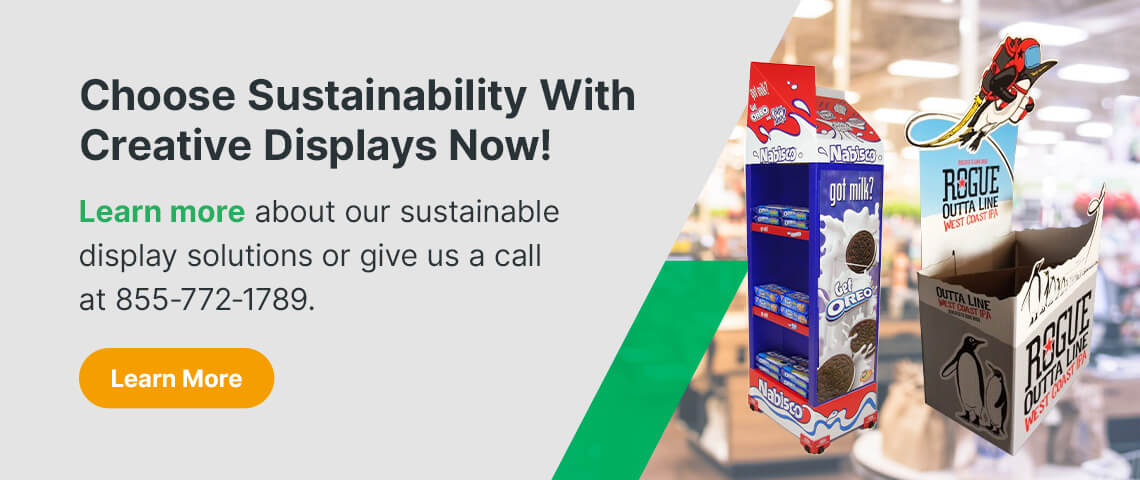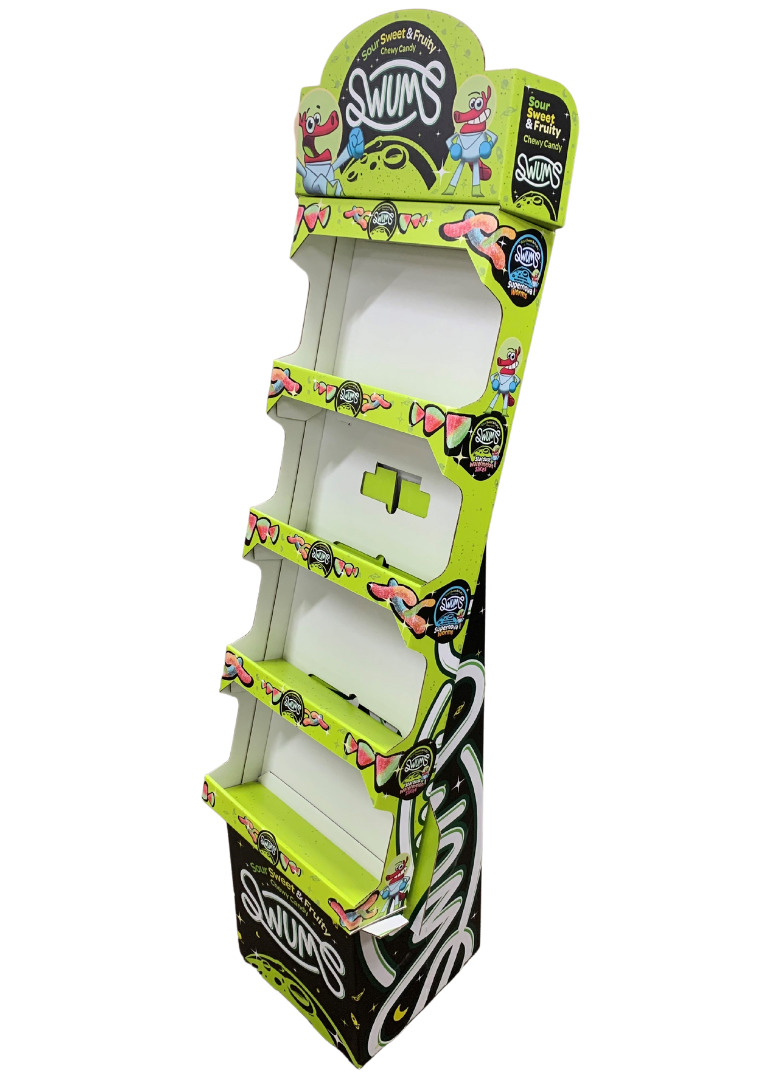The retail industry is increasingly embracing eco-friendly practices in response to consumers’ growing demands for sustainable options. These practices include implementing green packaging solutions, sourcing environmentally conscious materials and finding ways to reduce carbon footprints throughout the supply chain.
Shifting operations toward more eco-friendly practices addresses consumer demands while fostering a conscientious, responsible approach to consumption. It is important for brands to understand the nuances of consumer preferences and corporate responsibility — alongside initiatives to establish better sustainability — in order to mitigate challenges along the way and enjoy a lower carbon footprint.
Top 4 Factors Driving Eco-Friendly Retail Demand
Products that consumers purchase and then discard contribute to an estimated 70% of global greenhouse footprints. Carbon footprints indicate the environmental impact an organization or its supply chain has, and where there is an opportunity to lower these footprints. Several factors drive the demand for eco-friendly retail practices, all serving as vital reasons for brands to make the switch.
1. Environmental Awareness and Concerns
Consumer awareness about environmental issues and sustainability is increasing, driving the demand for products that align with eco-friendly practices. Companies that can show they use ethically sourced materials, reduce waste and implement renewable energy practices have a competitive advantage, as customers prefer to support brands that are making an environmental effort.
2. Ethical Consumerism and Values
In the last year, 93% of consumers either increased or maintained their sustainable purchasing habits. This consistency indicates that buyers are invested in understanding how their consumption impacts the environment, which translates to buying from brands that align with their values. These values among customers are driven by media coverage and social influences that raise awareness, prompting consumers to adopt more rigid buying behaviors toward eco-friendly choices.
3. Regulatory and Government Initiatives
Answering the need for sustainable practices, the government is implementing various policies, regulations and initiatives for individuals and organizations making an effort to reduce their carbon footprint. From imposing stricter standards in waste management to tax incentives for commercial clean vehicles, brands have many beneficial initiatives to explore as they turn to eco-friendly retail practices.
4. Corporate Responsibility and Reputation
Between 2022 and 2023, 75% of Chief Experience Officers invested even more in their brands’ sustainability efforts. This commitment to retail sustainability shows that a company is open to expressing accountability for its environmental impact toward the public, its staff and other stakeholders. Additionally, this transparency increases existing customer loyalty, supports a positive brand image and attracts new customers.
Types of Eco-Friendly Retail Products and Practices
Packaging, products and displays can reduce landfill space through using more recycled and recyclable materials. Recycling just one ton of paper can free up 3.3 cubic yards of landfill space, reducing the supply chain’s carbon footprint.
Sustainable Sourcing and Supply Chain
Brands can select suppliers with sustainable practices and sourcing methods by integrating ethical, environmental and social performance factors into decision-making. Critical aspects of sustainable sourcing and the supply chain include:
- Certifications and standards: Organizations should prioritize materials and products certified by standards like Fair Trade, the Rainforest Alliance or the Forest Stewardship Council.
- Transparency and traceability: Transparency helps to mitigate greenwashing concerns, as consumers and stakeholders have access to information regarding the trace origins of products.
- Ethical sourcing: Ethical sourcing may require a supply chain audit to ensure materials or components provided by suppliers adhere to human rights standards like ethical labor practices, safe working conditions and fair wages.
Eco-Friendly Packaging and Design
When companies choose to use eco-friendly packaging or product designs that consider a circular economy, they directly reduce their environmental impact. Elements of these principles and design considerations include:
- Conduct lifecycle assessments: Start packaging design audits with evaluations to understand the current environmental impact and how improving the design can minimize ecological footprints.
- Use recycled or sustainable materials: Biodegradable plastics, recycled paper, compostable materials and renewable sources like bamboo can create biodegradable, recyclable and reusable packaging.
- Reduce packaging waste: Source reduction aims to minimize excess packaging, while right-sizing matches packaging to the product. Designing packaging for disassembly facilitates easy recycling or upcycling.
Energy-Efficient Retail Operations
As retailers are responsible for up to 25% of global carbon emissions, integrating energy-efficient practices reduces overheads and environmental conservation. Essential characteristics of energy-efficient retail operations are:
- Energy management systems: Systems that monitor energy use can help retailers and manufacturers lower their electricity usage by following indications from smart thermostats, occupancy sensors and setting timers for HVAC systems.
- Renewable energy: Retailers can invest in renewable energy sources like solar panels to power their operations through clean energy.
- LED lighting: Switching to LED lights that use up to 75% less energy throughout the retail space will reduce electricity consumption and the overheads associated with this reduction.
Eco-Labels and Certifications
Empowering consumers with information to verify that certain products and operations meet critical sustainability standards is crucial. Common eco-labels and certifications include:
- Fair Trade Certified: This certification applies to consumables and agricultural commodities produced under fair labor conditions.
- Energy Star: An Energy Star certification is for energy-efficient appliances, lighting and electronics that meet the criteria specified by the Environmental Protection Agency (EPA).
- Leadership in Energy and Environmental Design (LEED): The LEED certification applies to buildings and spaces that meet set criteria for energy efficiency, sustainability and water conservation.
Why Embrace Eco-Friendly Retail Practices?
Brands can contribute to a reduced environmental impact through a proactive approach to eco-friendly retail practices that minimize waste, conserve natural resources and lessen carbon emissions. Doing so offers a range of benefits, including:
- Attract environmentally conscious consumers: By aligning with consumer preferences for environmentally friendly and sustainable practices, companies effectively invite new customers to their brand, creating a better reputation and enhancing loyalty.
- Achieve cost savings and efficiency improvements: A significant benefit of switching to clean energy usage is saving on overheads related to electricity usage. Between July 2022 and July 2023, the average electricity bill increased to 16.8¢ per kilowatt hour from 14.7¢ per kilowatt hour.
- Create a positive brand image: When sustainable retailers demonstrate their corporate social responsibility publicly and transparently, they enjoy an enhanced brand image that attracts socially conscious investors and customers.
- Account for long-term environmental impact: A sustainable business model becomes resilient as it considers the long-term effects its operations can have on the economy, environment and society.
- Increase employee retention: Aligning with sustainable practices fosters a more positive work environment, boosting employee morale and attracting new talent who value these efforts. Introducing employee training programs and involving them in sustainability efforts can encourage staff to continue these best practices.
Strategies for Meeting Eco-Friendly Retail Demand
Successfully meeting the demand for eco-friendly retail practices requires a strategic approach, integrating sustainability into various operational aspects. It is vital to assess and improve on these strategies regularly. Use customer feedback, employee insights and industry trends to continuously enhance and innovate sustainable practices.
Sustainable Product Development
Brands that develop or manufacture products should focus on using renewable sources and recycled materials as well as reducing the environmental impact these products have throughout their lifecycle. During a sustainability audit, companies should note where products and their packaging can be optimized toward a better eco-footprint.
Green Retailing and Communication
Engage customers through loyalty programs that reward their sustainable choices, and open up communication to educate buyers. Share information about the benefits they can enjoy by switching to eco-friendly products via clear labeling and informational campaigns in-store. Take the opportunity to collaborate with environmental organizations to share these best practices and publicly address sustainability challenges.
Environmentally Friendly POP Displays
Effective POP displays can aid in promoting sustainable products, encouraging customers to participate in eco-friendly practices or educating buyers about your brand’s commitment to a lower carbon footprint. Sustainable point-of-purchase (POP) displays utilize less materials to minimize environmental impact while showcasing products.
There are various types of POP displays that can promote products and sustainability efforts. Here are strategies for environmentally friendly POP displays:
- Upcycled materials: Recycled or upcycled materials can be disposed of responsibly while serving as a foundation for recyclable display structures.
- Reusable displays: Eco-friendly retail displays can be reused multiple times or repurposed for various promotions, reducing waste since there is no need to create new displays frequently.
- Eco-friendly inks: Opt for printing techniques and inks with minimal environmental impact and safer disposal.
- Biodegradable materials: Bamboo, cork and plant-based plastics can decompose naturally.
- Minimalist designs: Using the least amount of material possible bypasses excessive resource usage and reduces overall waste.
Challenges in Meeting Eco-Friendly Retail Demand
Organizations must invest in research and development to meet the growing demand for eco-friendly retail practices, with a long-term commitment to sustainability goals. It is essential to be prepared for the challenges that go along with change to facilitate a successful transition. To paraphrase the United Nations World Commission on Environment and Development, it is important to meet consumer demands for sustainable practices without compromising the opportunities for future growth.
1. Transitioning From Conventional Practices
Making changes may require company-wide employee training as new practices are implemented. The right resources and training may be time-consuming, but this is a critical step in the transitional phase. From the start of the new initiatives, organizations must establish benchmarks, metrics and reliable reporting mechanisms to measure the performance of these initiatives.
2. Balancing Sustainability With Profitability
Implementing these initiatives may require investment in infrastructure changes, new technologies and sustainable materials, impacting short-term profit margins. During this time, it is important to maintain product and service quality to ensure sustainable practices and product options meet consumer expectations. Balancing sustainable efforts with profitability may require a selective approach where specific processes are implemented over a more extended period of time.
3. Greenwashing and Consumer Skepticism
It is an unfortunate truth that some brands make broad, unfounded claims about their sustainability efforts. Excessive greenwashing has created an overall sense of skepticism from consumers, even when a company makes legitimate claims. It is essential to keep this reality in mind and implement strategies to help restore or ignite institutional trust from the public.
4. Supply Chain Complexity
Collaborating with suppliers who use sustainable sourcing, eco-friendly materials and ethical business practices is essential. To ensure that stakeholders in the supply chain are compliant, place high importance on transparency and traceability in their operations.
Top Eco-Friendly Retail Trends to Watch for
Technology will feature in a more prominent role in supply chain transparency. Software like blockchain, AI and data analytics tools will continue to aid decision-making for sustainable best practices, adding better traceability to supply chains.
Innovations in Sustainable Materials
Innovation and development in sustainable materials will continue to rise. More recycled and upcycled materials will offer alternatives to traditional, non-sustainable sources to reduce environmental impact. Intelligent materials and sustainable textiles using innovative technologies, like biodegradable polymers and self-cleaning fabrics, are all innovations being invested in.
Circular Economy and Recycling Initiatives
As a circular economy is increasingly adopted, there is an expectation to see more products designed according to this model — products designed for easy reuse and recycling. Retail brands will join this evolution by facilitating closed-loop systems that minimize waste and extend product lifecycles.
Consumer Education and Advocacy
Buyer awareness will continue growing, and companies will see more appreciation for educating and including customers in sustainable efforts. Consumer education will lead to a demand for more transparency from brands regarding products’ environmental footprint — including clear labeling, access to certifications, and detailed information about the product lifecycle, manufacturing and sourcing processes.
Recommerce Trends
Also referred to as resale and secondhand shopping, this sustainable practice is already growing in popularity. Recommerce aligns with the principles of a circular economy as it diverts items from landfills and extends the life span of various products through sustainable shopping. By reversing commerce, products are repurchased and reused — a practice that will lower the need for constant manufacturing of new raw materials.
Choose Sustainability With Creative Displays Now!
Eco-friendly retail practices present a pivotal opportunity for organizations to align themselves with customer demands for sustainability. Embracing such practices enhances brand reputation and customer loyalty and drives a significant shift toward more sustainability and environmental responsibility in the retail industry.
Creative Displays Now! offers eco-friendly display solutions that help meet brands’ sustainability goals. Our primary material — corrugated cardboard — is 100% recyclable and made from 60-95% post-consumer waste. Whatever your needs, we have recyclable display solutions to suit your unique requirements.
With over 60 years in the display and packaging business and in-house structural design experience, we handle everything from design to distribution under one roof for truly custom displays. We understand what the major retailers require in terms of display specifications, and our team will create your display with speed and quality — delivering products with an on-time percentage of over 99%.
Learn more about our sustainable display solutions or give us a call at 855-772-1789 to speak to our team and get your custom display project started.

